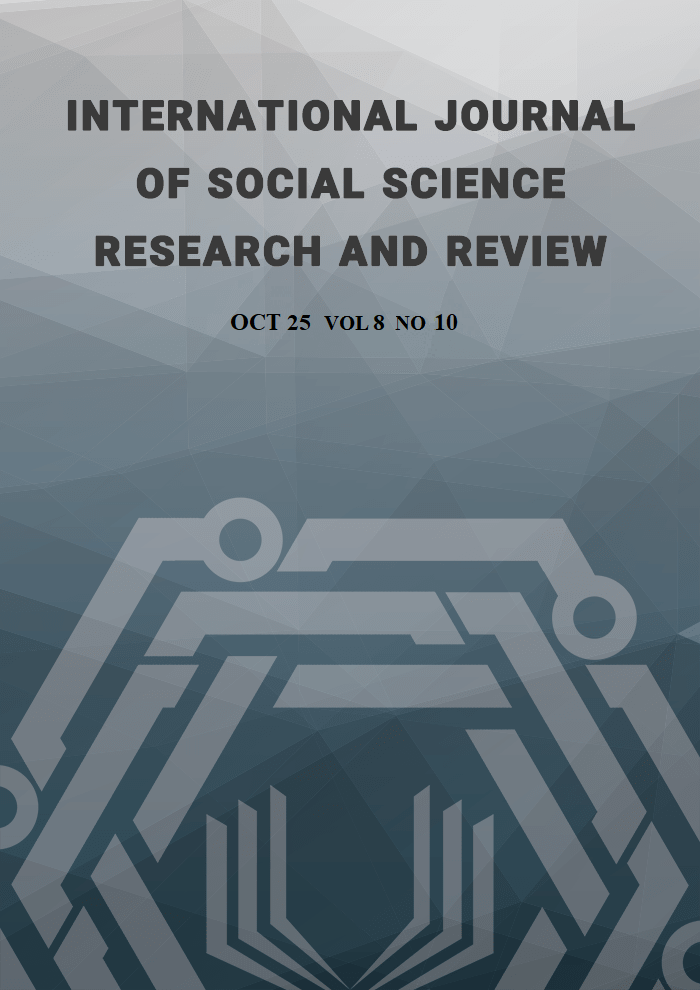Perspectives on Worker Well-Being: Insights from a Textile Factory in Tamil Nadu
Abstract
This research assesses the well-being of workers within a Textile factory in Tamil Nadu and includes interviews with 25 women workers and 5 executives. Well-being is subsequently characterized in terms of financial security, physical security, social security and emotional security. The research yielded three key themes: incentives to workers like a bonus, a provident fund, and health insurance can help to secure the workers' "stability" on the job; grievance procedures that are accessible to workers that they perceive to be responsive; and a culture where employees are encouraged to participate in exercise, have discounted meals, and have on-site child care. In general the workers indicated they are satisfied with their work, although there are areas of concern such as the cost of transportation, the heat, and shortages of labour. It is the position of management that well-being is an obligation, and well-being is a driver of productivity. In this article, we have called well-being "normal" for a workplace but recommend that corporations establish well-being as a strategy into a corporate strategy; embed well-being into a normal diversity program, create support from managers for well-being programs, and expand programmes for the health of the workforce and child care". In this report we have illustrated how local practices build on global conversations about dignity at work and sustainable working.
References
Bhoir, M., & Sinha, V. (2024). Employee Well-being Human Resource Practices: A Systematic Literature Review and Directions for Future Research. Future Business Journal, 10(1). https://doi.org/10.1186/s43093-024-00382-w.
Bialowolski, P., Lee, M. T., Weziak-Bialowolska, D., Chen, Y., Cowden, R. G., McNeely, E., & VanderWeele, T. J. (2023). Differences in Multi-Dimensional Well-Being Among Factory Workers: Evidence From Six Countries. Applied Research in Quality of Life, 18(5), 2159–2180. https://doi.org/10.1007/s11482-023-10181-0.
Christian Krekel, George Ward, & Jan-Emmanuel De Neve. (n.d.-b). Employee Wellbeing, Productivity, and Firm Performance. In Saïd Business School.
Clément S. Bellet, Jan-Emmanuel De Neve, & George Ward. (n.d.). Does Employee Happiness Have an Impact on Productivity? Centre Pour La Recherche Economique Et Ses Applications.
Coppens, E., Hogg, B., Greiner, B. A., Paterson, C., De Winter, L., Mathieu, S., Cresswell-Smith, J., Aust, B., Leduc, C., Van Audenhove, C., Pashoja, A. C., Kim, D., Reich, H., Fanaj, N., Dushaj, A., Thomson, K., O’Connor, C., Moreno-Alcázar, A., Amann, B. L., & Arensman, E. (2023). Promoting Employee Wellbeing and Preventing Non-clinical Mental Health Problems in the Workplace: A Preparatory Consultation Survey. Journal of Occupational Medicine and Toxicology, 18(1). https://doi.org/10.1186/s12995-023-00378-2.
Gallup, Inc. (2022, November 11). What Is Employee Wellbeing and Why Is It Important? Gallup.com. https://www.gallup.com/workplace/404105/importance-of-employee-wellbeing.aspx.aspx.
Grievance Mechanisms for Business and Human Rights Strengths, Weaknesses and Gaps. (2008). Harvard University.
Jarden, R. J., Siegert, R. J., Koziol-McLain, J., Bujalka, H., & Sandham, M. H. (2023). Wellbeing Measures for Workers: A Systematic Review and Methodological Quality Appraisal. Frontiers in Public Health, 11. https://doi.org/10.3389/fpubh.2023.1053179.
Mahawar, S. (2022, November 10). Factories Act, 1948 - iPleaders. iPleaders. https://blog.ipleaders.in/factories-act/.
Mahawar, S. (2022, November 10). Factories Act, 1948 - iPleaders. iPleaders. https://blog.ipleaders.in/factories-act/.
MAS Kreeda Al Safi-Madaba. (2017). Tackling Childcare: The Business Case for Employer-Supported Childcare. International Finance Corporation.
Medeni, İ., Koç, E. G., Medeni, V., & İlhan, M. N. (2025). Occupational Risk Perception and Associated Factors Among Textile Workers: A Cross-Sectional Study From Türkiye. Workplace Health & Safety. https://doi.org/10.1177/21650799251322198.
Mohan, D. (2023, September 29). New Report Reveals Stark Disparities in India’s Labour Market Based on Caste, Gender, and Religion - the Wire. The Wire. https://thewire.in/labour/new-report-reveals-stark-disparities-in-indias-labour-market-based-on-caste-gender-and-religion.
Sankhla Consultants. (2025, January 2). Unlocking the Factories Act : Key Provisions and Regulations. Sankhla Consultants -. https://sankhlaco.com/the-factories-act-1948/.
Seidu, R. K., Ofori, E. A., Eghan, B., Fobiri, G. K., Afriyie, A. O., & Acquaye, R. (2024). A Systematic Review of Work-related Health Problems of Factory Workers in the Textile and Fashion Industry. Journal of Occupational Health, 66(1). https://doi.org/10.1093/joccuh/uiae007.
Wijngaards, I., King, O. C., Burger, M. J., & Van Exel, J. (2021). Worker Well-Being: What It Is, and How It Should Be Measured. Applied Research in Quality of Life, 17(2), 795–832. https://doi.org/10.1007/s11482-021-09930-w.
Workplace Interventions to Improve Worker Well-being | the Abdul Latif Jameel Poverty Action Lab. (2025, May 1). The Abdul Latif Jameel Poverty Action Lab (J-PAL). https://www.povertyactionlab.org/policy-insight/workplace-interventions-improve-worker-well-being.
World Bank Group. (2021, March 9). Childcare for Garment Factory Parents Is Investment in Human Capital. World Bank. https://www.worldbank.org/en/news/feature/2021/03/05/childcare-for-garment-factory-parents-is-investment-in-human-capital.
Wu, A., Roemer, E. C., Kent, K. B., Ballard, D. W., & Goetzel, R. Z. (2021). Organizational Best Practices Supporting Mental Health in the Workplace. Journal of Occupational and Environmental Medicine, 63(12), e925–e931. https://doi.org/10.1097/jom.0000000000002407.
Copyright (c) 2025 Ritvick Mohan Shankar

This work is licensed under a Creative Commons Attribution-NonCommercial-NoDerivatives 4.0 International License.
Copyright for this article is retained by the author(s), with first publication rights granted to the journal. This is an open-access article distributed under the terms and conditions of the Creative Commons Attribution license (https://creativecommons.org/licenses/by-nc-nd/4.0/).





